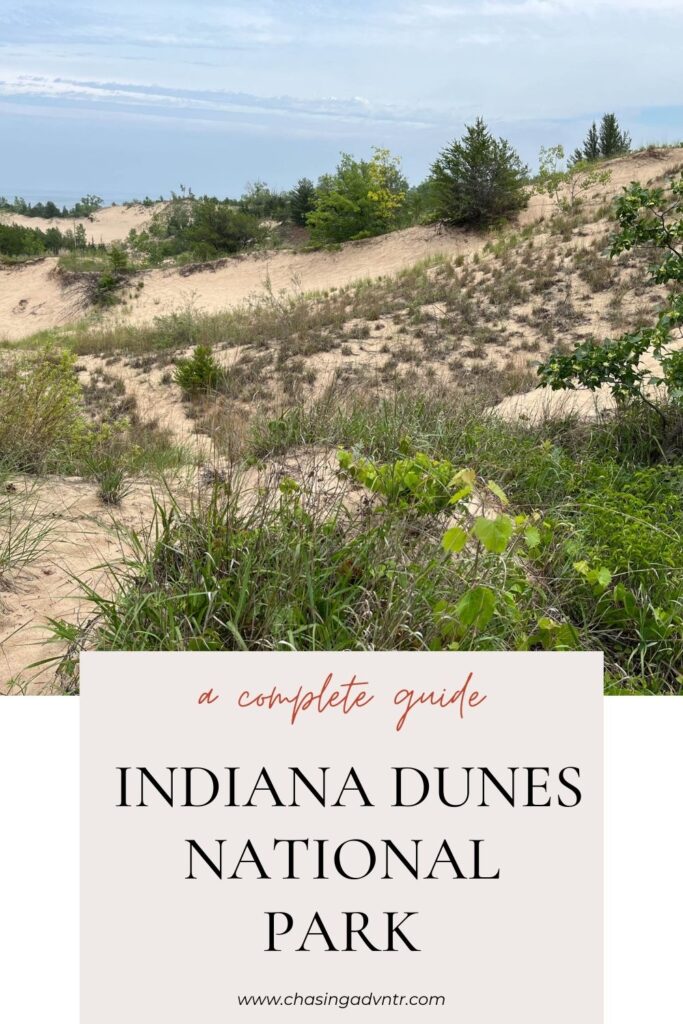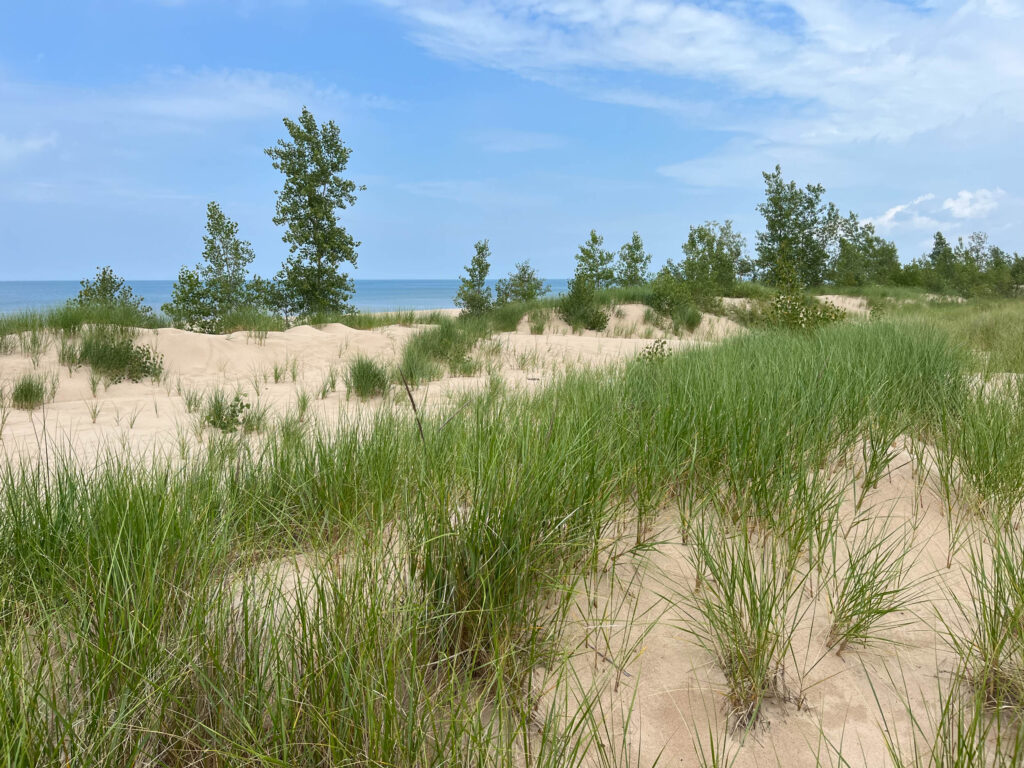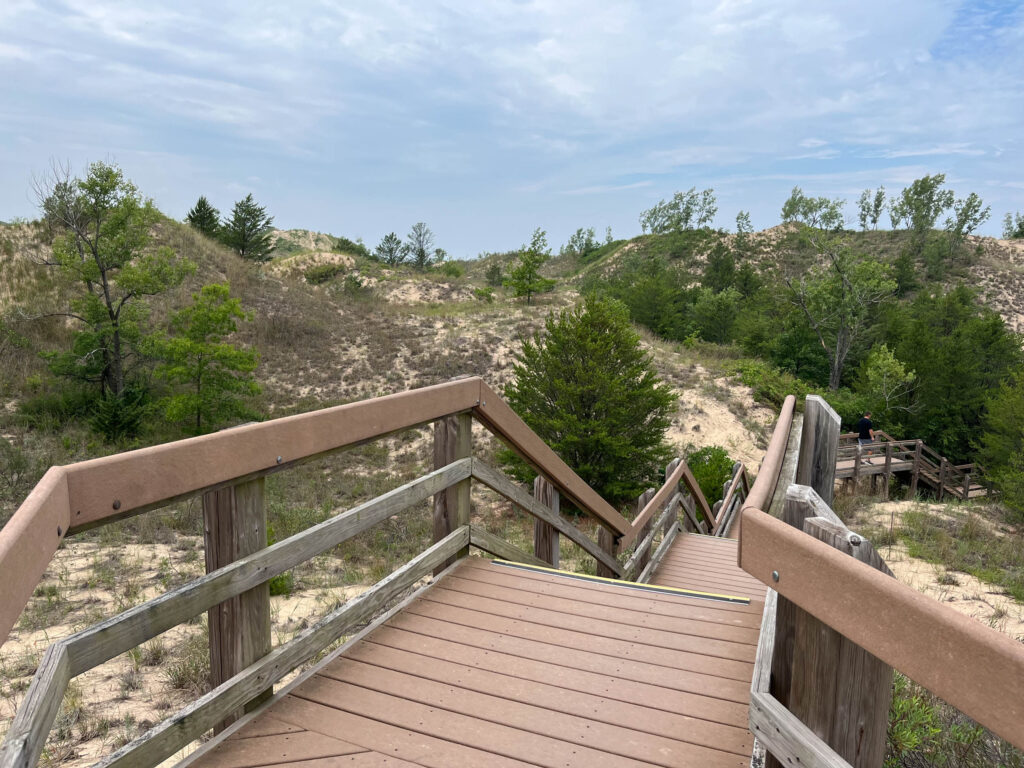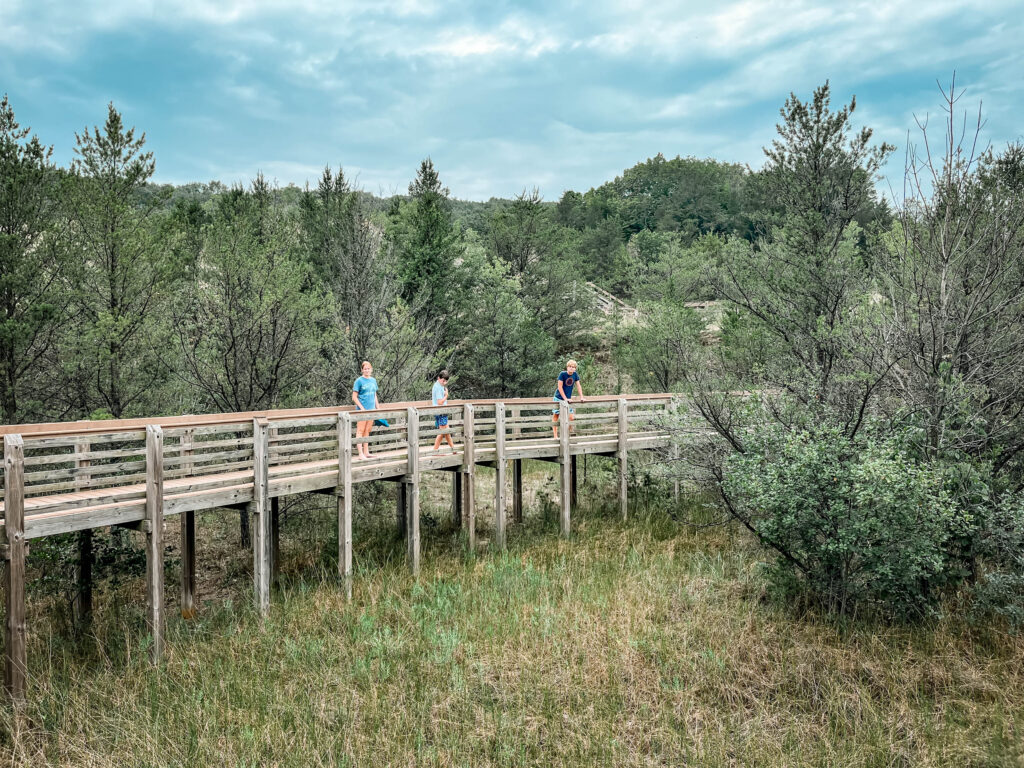
Complete Guide to Indiana Dunes National Park
Highlights of Visiting Indiana Dunes National Park
- Sand Dunes: The park is home to some of the most impressive sand dunes along the southern shore of Lake Michigan. With some dunes over 200 feet high, these dunes provide breathtaking views of the lake and the surrounding landscape. Popular dunes include Mount Baldy and the Indiana Dunes State Park’s dunes.
- Beautiful Beaches: With over 15 miles of shoreline along Lake Michigan, Indiana Dunes National Park boasts several pristine and picturesque beaches. Visitors can enjoy swimming, sunbathing, beachcombing, and beach picnics during the warmer months.
- Unique Ecosystems: The park is home to an incredible diversity of ecosystems, including sand dunes, oak savannas, wetlands, prairies, and forests. This varied habitat supports a wide array of plant and animal species, some of which are rare or endangered.
- Hiking Trails: Indiana Dunes National Park offers an extensive network of hiking trails, most of the trails are on the easy and short side. The Paul H. Douglas Trail and Cowles Bog Trail are among the most popular routes.
- Outdoor Recreation: In addition to hiking and beach activities, the park provides opportunities for camping, fishing, kayaking, birdwatching, and even cross-country skiing in the winter.
- Charming Cultural Sites: The park also has several historical sites that highlight the area’s cultural heritage. The Chellberg Farm, Bailly Homestead, and the historic Century of Progress homes are excellent examples of the park’s cultural significance.
- Sunsets over Lake Michigan: The setting sun over the vast expanse of Lake Michigan provides mesmerizing and unforgettable sunsets.
Essential Guides
Things to Know About Visiting Indiana Dunes National Park
General Overview
Indiana Dunes National Park is situated along the southern shore of Lake Michigan. This national park is renowned for its towering sand dunes, stretching over 200 feet high, providing breathtaking views of the lake and surrounding landscapes. The park’s beaches span more than 15 miles, offer opportunities for swimming, sunbathing, and beachcombing, making it an ideal spot for relaxation and family enjoyment.
The park includes 15,000 acres stretched along the shortline.
In addition the the National Park, the adjacent Indiana Dunes State Park offers more beaches, hiking and dunes to explore. There are several entrances to the park and you can see a complete map at the NPS Website.
Best Time to Visit Indiana Dunes National Park
Indiana Dunes is a year round destination, but the best time of year to visit for beaches and hiking is late spring when the flowers are in bloom, during the summer months, and into the fall with the foliage. In the winter you can also nordic ski or walk the trails when they are frozen and snow covered.
The table below shows the weather throughout the year.
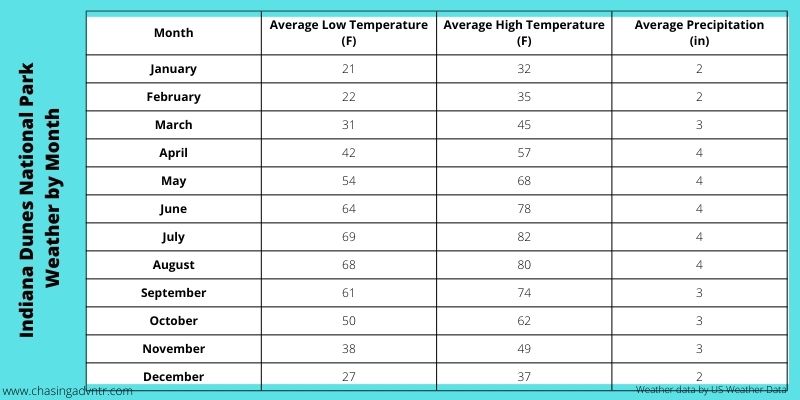
How to Get to Indiana Dunes National Park
If arriving by air, the closest major airports are Chicago O’Hare International Airport (ORD) and Chicago Midway International Airport (MDW). From you can rent a car or use shuttle services to access the park, which is approximately an hour’s drive away. Driving your own car is definintely the easiest way to get to the park.
For those coming by car, the park is accessible via major highways such as Interstate 94 and Interstate 80/90. Detailed directions and maps are available on the park’s official website. Additionally, the South Shore Line commuter train, connecting downtown Chicago to South Bend, Indiana, stops at the Dune Park Station, providing direct access to the park’s West Beach and other trailheads.
There is no National Park shuttle for Indiana Dunes, but you can use the local buses to navigation the park if you don’t have a car. The NPS site has some good general information on how to get around to the different sites using the bus.

How Much Time do you Need in Indiana Dunes National Park?
To see the park, do a few short hikes and visit some beaches, you should plan to spend 1 day in Indiana Dunes National Park. The park itself is small so it doesn’t take long to drive between the different sites and the trails are generally short and easy.
If you only have a 1/2 day in the park, you can also visit a beach, take a hike and get a sense of the park.

Where to Stay
You can either stay right near Indiana Dunes National Park or stay in Chicago and drive to Indiana Dunes for the day. There are many hotels in Chicago and we typically book through booking.com.
If you prefer to stay closer to Indiana Dunes, here are a few places to check out:
Hilton Garden Inn Chesterton: Not far from the park with an indoor swimming pool.
Vacation Apartment: This apartment is a great choice if you are traveling with a group.
You can also find several campgrounds around Indiana Dunes National Park.
Need to Know: Guide to Indiana Dunes National Park
- Diverse Ecosystems: Indiana Dunes National Park encompasses various ecosystems, including sand dunes, wetlands, forests, and prairies. Each area offers unique experiences, so plan to explore different sections to fully appreciate the park’s ecological diversity.
- Weather Considerations: The weather at Indiana Dunes can be unpredictable, especially near Lake Michigan. Be prepared for sudden changes in temperature and weather conditions. Dress in layers and check the forecast before your visit to ensure you’re ready for any weather surprises.
- Trail Options: The park boasts an extensive network of hiking trails suitable for all skill levels. From easy lakeside strolls to more challenging dune hikes, there’s something for everyone. Study the trail map and choose trails that align with your abilities and interests.
- Wildlife and Plant Life: Indiana Dunes National Park is home to numerous plant and animal species, some of which are rare and protected. Respect wildlife from a distance and never approach or feed them. Also, take care to stay on designated trails to preserve the fragile ecosystems and avoid damaging plants.
- Visitor Centers and Park Information: The park has visitor centers that provide valuable information, maps, exhibits, and educational programs. Stop by these centers to learn about the park’s history, safety guidelines, and any special events or activities taking place during your visit.
